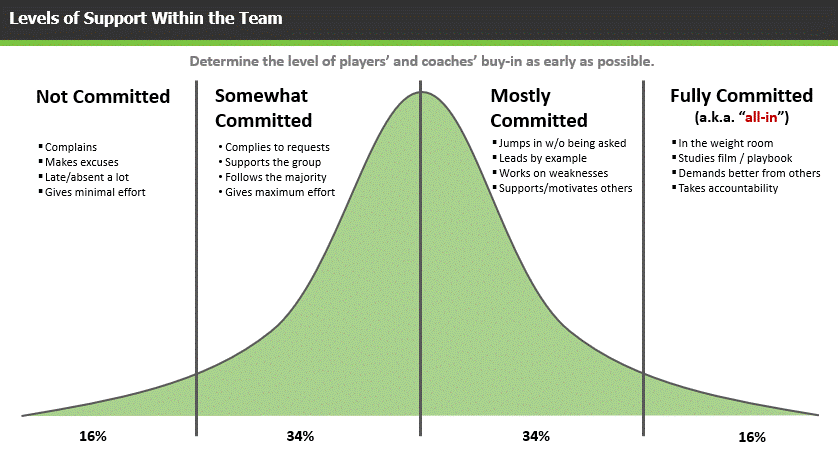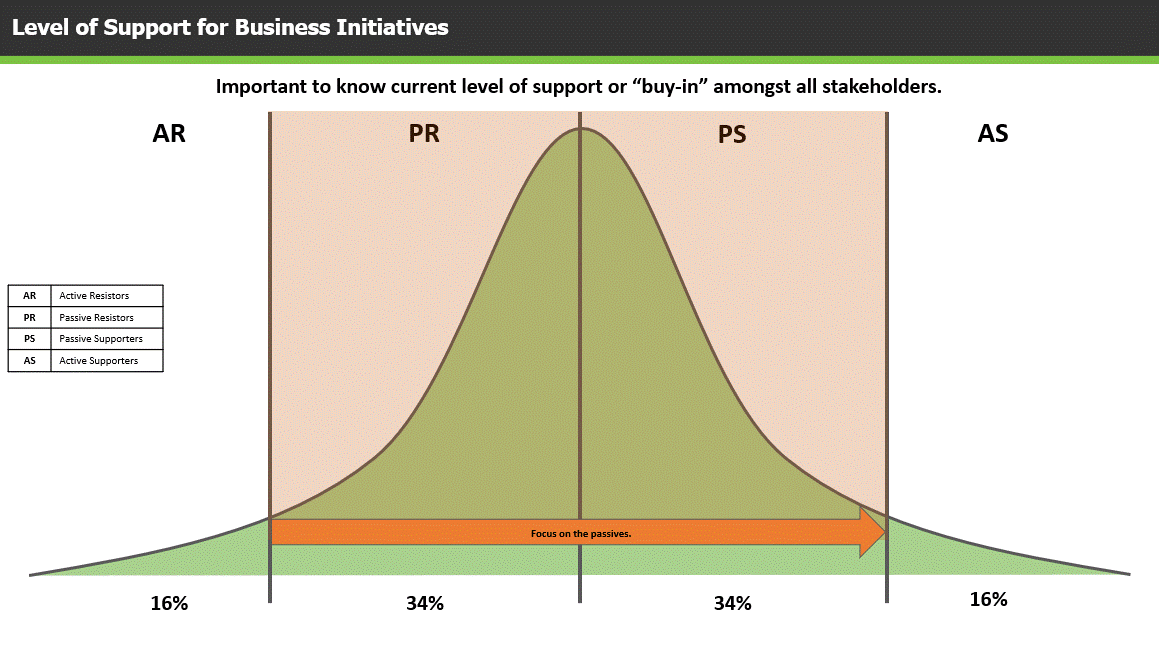For simplicity, a bell curve with normal distribution was used with just four categories of player:
- Non-commits look to blame others when things aren’t going well for them. Some are content with just being a member of the team
- Somewhats are followers … often looking to others to lead drills, ask questions, etc.
- Mostlys are (or have potential to be) leaders, but not yet ready/willing to go the extra mile; and
- All-ins are more than willing to go the extra mile. They’re first to meetings/practices, trains during and outside the season, and speak up when feeling the need to do so.

Knowing which team members were in which category helped to focus our messaging accordingly. For example, the mostly committed were praised for their efforts so far but challenged to become fully committed. The process helped identify where each team member stood in terms of commitment then establish goals to increase that, if achieved, would benefit both them and the team.
This approach can be modified for working groups inside business organizations.
Whether leading an initiative, its team, or an entire organization, it is critical to understand the current levels of support amongst the stakeholders, and whether the initiative is set up for success or failure.
The same bell curve can be applied, with the four categories being changed to:
- Active Resistors (AR)
- Passive Resistors (PR)
- Passive Supporters (PS)
- Active Supporters (AS)

Through appropriate engagement you can confidently allocate your stakeholders into one of the categories. It’s best to focus on the passives as doing so will save time and level of effort. If the passives become actives your initiative you’ll have significant majority of stakeholders on side, and the resistance shown by the remainder should be less significant.
Whether it’s a sports team, corporate multi-national, or anything in between, it’ll be important to keep open lines of communication. Assess then manage stakeholders’ commitment – early and often.
Be consistent with your messaging among peers and those reporting into them. It’s okay do disagree so long as there’s commitment from all sides going forward.
Establish two-way communication … share what you are seeing/feeling while actively listening to what they are seeing/feeling.
Once the foundation of support is known an appropriate strategy can be laid out to bridge any gaps.


